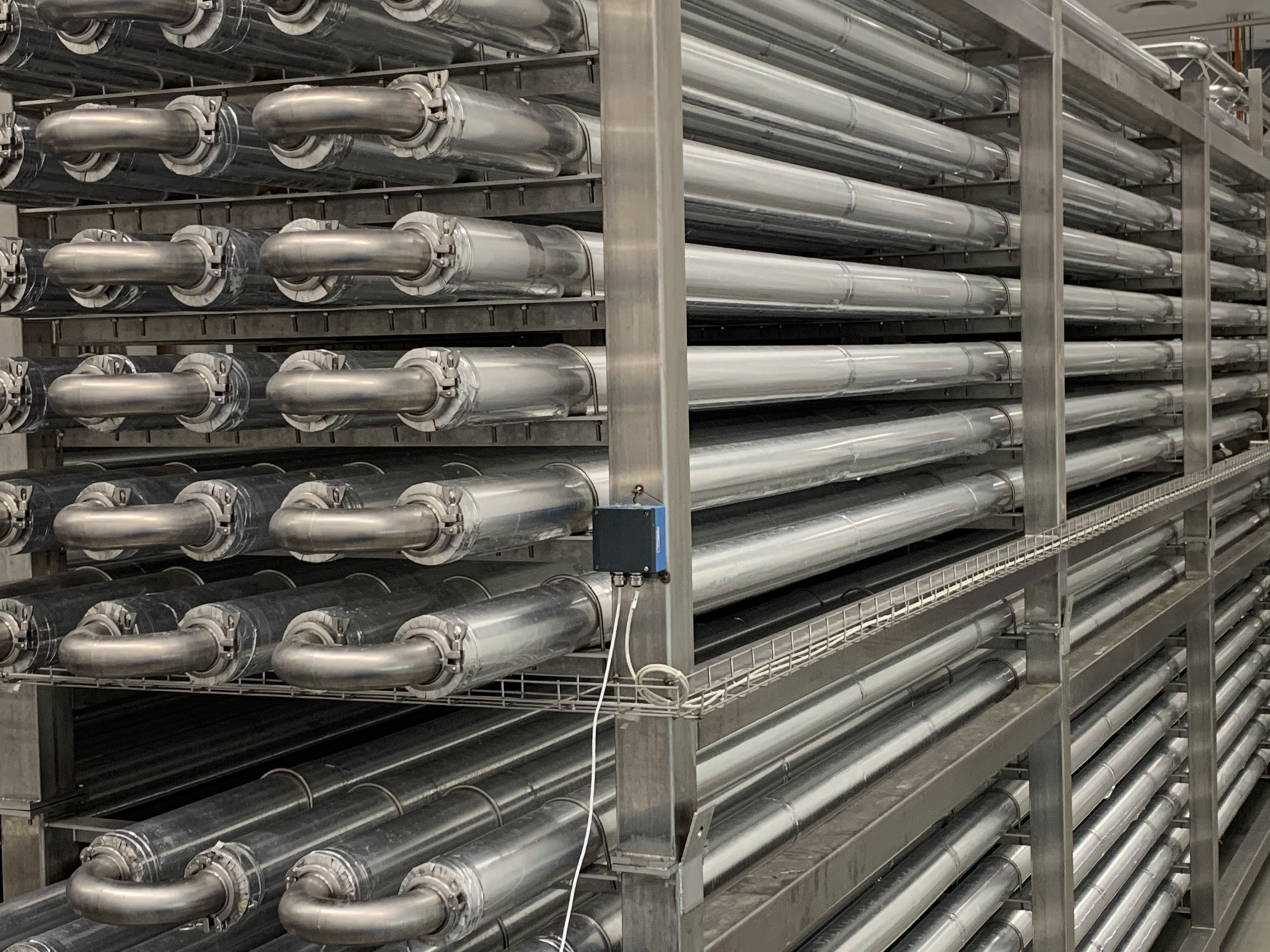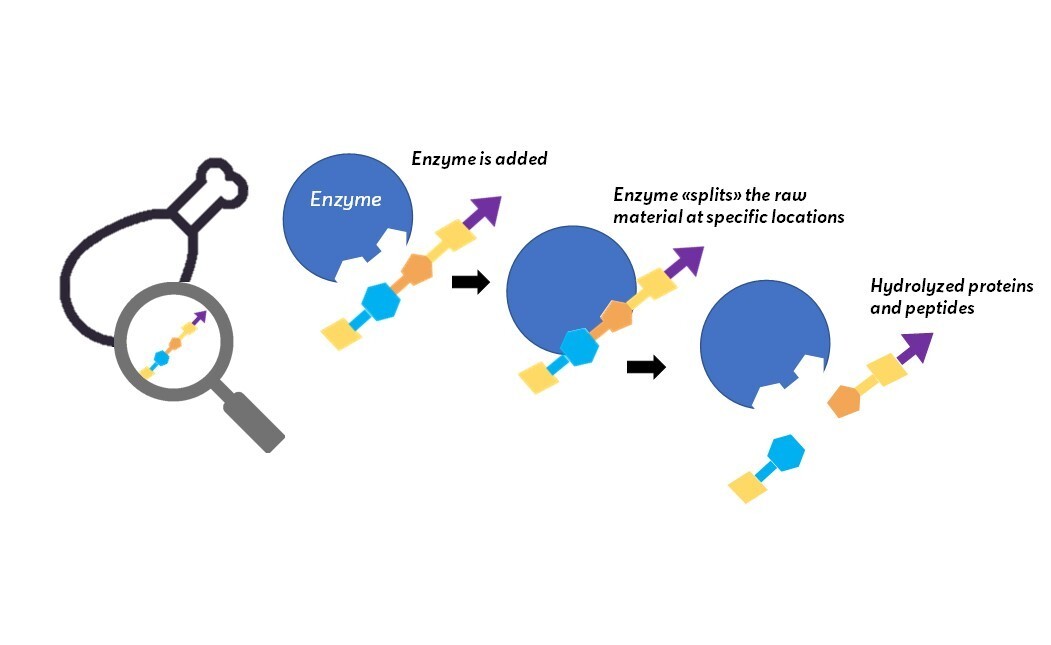When you enter the Bioco plant at Hærland, the first thing that strikes you is that the plant is bigger on the inside than it looks on the outside. The second thing is that there are many pipes that run through the plant. These pipes form the secret to Bioco's natural process called continuous enzymatic hydrolysis. We explain this process by taking a journey through the plant, and take a look what happens in those pipes.
What is enzymatic hydrolysis?

Bioco uses continuous enzymatic hydrolysis to refine chicken and turkey raw materials and create hydrolyzed proteins and peptides. What does that mean, and how does that work?
It all starts with the raw materials. After the breast fillet and thigh are cut and packed for purchase in the supermarket or the restaurant, what remains is bone with small bits of meat, which is the raw material used at Bioco. These bones are transported directly from the meat processing plant from Nortura into Bioco through the first pipe of this story. This ensures the raw materials are super fresh and remain indoors. The bones are first ground up into small enough particles so that nature's most versatile tool – enzymes – can do its job in the next step.

 A simplified illustration of enzymatic hydrolysis
A simplified illustration of enzymatic hydrolysis
Enzymes are key to the Bioco process. Enzymes are natural "tools" that can be found within the body and in many other places in nature. Enzymes have one of two functions: they either put two components together, or they split up one component into two. The digestive system has therefore a lot of enzymes: they break down the food we eat into small enough particles, which allows the body to take up nutritious elements from our diet. At Bioco we also use enzymes that can split up a component into two using water – a more scientific word for this is hydrolysis. Because we use enzymes, the Bioco process is called enzymatic hydrolysis: the raw materials are split into smaller particles by enzymes. There are different ways to hydrolyze raw materials, but unlike these other methods (acid, base or salt), the enzymatic process is more controlled and gives a much better result. The enzymes we use are traditional food enzymes with a specific focus on proteins, and split up proteins into smaller components: peptides. Having a high number of peptides is what makes the products that Bioco produces very attractive for many applications where good taste and nutrition is important.
Proteins and peptides
building block for health
building block for health
Proteins are the most important building block in all living tissues. We are very familiar with proteins in every day life – for example, we see them turn from yellow and see-through to white when we cook an egg, or we read on the package of a sports bar that this bar is very rich in protein. Proteins come in different shapes and sizes, but what they have in common is that they are made of long chains of amino acids. In humans there are 20 different amino acids used to build proteins - which can be combined in many different variations, creating many different proteins. The body can make amino acids on its own, but not all 20 of them. Nine amino acids are so-called essential amino acids, and need to be acquired through our diet.
Smaller chains of amino acids are not called proteins, but peptides. A pair of amino acids is called a dipeptide, and a trio of amino acids is called a tripeptide. The stomach and intestine need to break down the protein we eat to dipeptides and tripeptides, in order to utilize the proteins. Only then are the peptides small enough to cross the intestinal barrier and be taken up in the bloodstream.
Did you know that proteins are key to most functions in the body? They play an important role in building and maintenance of muscle, bones, skin and mucus, and in transporting oxygen and nutrients in the blood. Proteins also play a role in the immune system, and in the storage and transport of different components in the body. The enzymes that are used in our enzymatic hydrolysis process are also proteins, and after the process at Bioco has come to an end, the enzymes are deactivated and are perfectly safe to eat.
So what about all those pipes? The long network of pipes is where the enzymes do their work. They are mixed with the raw materials at the start of the pipes, and at the end of the pipes they have finished breaking down the proteins into peptides. Using pipes rather than a huge tank makes sure that the enzymes have better conditions for the task at hand, and can do it faster while giving good quality products. Using enzymes also ensure that there is no waste of the entire process – all the fractions that are produced have a value and can be used in different applications.







